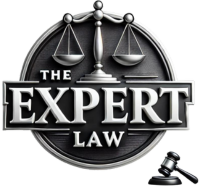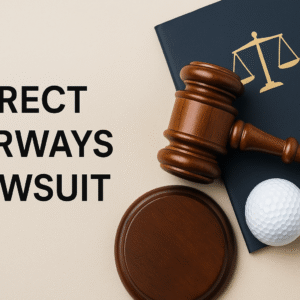Introduction to Injunctions
What is an Injunction?
An injunction is a powerful legal tool, a court-issued command directing a party to act or refrain from acting in certain ways. It’s especially critical when monetary compensation can’t address the issue, aiming to prevent harm before it happens. This preventive measure ensures that rights are upheld without delay, offering prompt protection against potential damages that could not be easily reversed.
Key Elements:
- Preventive Action: Injunctions are proactive, designed to prevent harm rather than addressing it after the fact.
- Immediate Impact: They provide immediate relief, making them essential in time-sensitive situations.
- Enforcement of Rights: Injunctions enforce rights directly, offering a unique form of legal relief that monetary damages cannot provide.
Why It Matters:
Injunctions are crucial in scenarios where waiting for a traditional legal resolution could result in irreparable damage. They are commonly used in disputes involving privacy, safety, and proprietary rights, ensuring that the involved parties avoid actions that could lead to significant harm.
Tips for Understanding:
- Look for Immediate Needs: If a situation requires immediate intervention to prevent harm, an injunction might be the appropriate legal tool.
- Legal Advice: Always consider consulting with a legal professional to understand if an injunction applies to your situation and how to proceed with requesting one in court.
Types of Injunctions
In the realm of legal remedies, injunctions are versatile tools designed to address various circumstances. Each type of injunction serves a unique purpose and has a specific duration, tailored to the needs of the legal proceedings at hand. Understanding these differences is key to leveraging their protective powers effectively.
1. Temporary Restraining Orders (TRO)
- Purpose: A TRO is a short-term measure used to prevent imminent harm by maintaining the status quo until a more comprehensive hearing can be held.
- Duration: Typically, it lasts only a few days or weeks, sufficient to arrange a more detailed court review.
- Application: Commonly used in domestic violence cases or when immediate and significant harm is threatened.
2. Preliminary Injunctions
- Purpose: This type of injunction is issued after an initial review of the facts, when there is a need to prevent harm or maintain the status quo throughout the duration of a trial.
- Duration: It remains in effect until the trial’s conclusion or until a further court order modifies it.
- Application: Often used in business disputes or copyright cases where delaying action until the end of the trial might result in irreparable damage.
3. Permanent Injunctions
- Purpose: Granted as part of a final judgment when the court decides that ongoing actions need to be permanently altered to prevent future harm.
- Duration: As the name suggests, these injunctions are designed to be permanent, lasting indefinitely unless a court orders otherwise.
- Application: Common in cases where the court finds that a party has infringed on the rights of another and such actions must be stopped permanently.
Understanding and Applying:
- Recognize the Need: Different situations call for different types of injunctions. Assessing the immediacy and severity of harm can guide the choice.
- Legal Consultation: Given the complexities and significant implications, consulting with a legal expert to navigate the injunction process is advisable.
Legal Requirements for Obtaining an Injunction
Obtaining an injunction is a legal process that involves meeting specific criteria and following a structured pathway from filing a complaint to a court’s decision. The process is designed to ensure that injunctions are granted only in circumstances where they are necessary to prevent harm or injustice.
Key Legal Criteria:
- Proving Irreparable Harm:
- Definition: The harm being prevented must be significant and not adequately compensable by monetary damages.
- Examples: This could include situations where a party’s actions could cause lasting damage to a business’s reputation or where personal safety is at risk.
- Demonstrating a Likelihood of Success on the Merits:
- Explanation: The applicant must show that their case is likely to succeed at trial. This does not mean they must win the case at this stage but must demonstrate a strong legal argument.
- Relevance: This criterion prevents the courts from being used to issue injunctions in cases where there is no substantial legal basis.
Detailed Process:
- Filing a Complaint:
- Initial Step: The process begins with filing a legal complaint in the appropriate court, detailing the reasons for seeking an injunction and the nature of the harm being prevented.
- Documentation: The complaint must be accompanied by affidavits or other evidence supporting the claim of irreparable harm and the need for immediate action.
- Requesting a Hearing:
- Scheduling: Once the complaint is filed, a hearing date is set where both parties can present their arguments. The urgency of the situation typically influences how quickly this hearing occurs.
- Notice: All involved parties must be notified about the hearing to ensure fairness and an opportunity to prepare.
- Presenting Evidence:
- Burden of Proof: During the hearing, the plaintiff must present evidence to substantiate their claims, demonstrating both the irreparable harm and the likelihood of success on the merits.
- Opposition: The defendant has the opportunity to counter the evidence, potentially arguing that the harm is not severe or that the plaintiff’s legal claims are weak.
- Court Decision:
- Judgment: After considering the evidence and arguments from both sides, the judge will decide whether to grant the injunction.
- Factors Considered: The decision is based on the balance of harms, public interest, and the overall equity of the situation.
Tips for Applicants:
- Gather Comprehensive Evidence: Before filing for an injunction, compile as much relevant evidence as possible to support your case.
- Legal Representation: Consider hiring a lawyer who specializes in the type of legal issue you are facing, as they can provide invaluable guidance and increase the likelihood of a favorable outcome.
Role and Impact of Injunctions
Injunctions play a pivotal role in the legal system, serving as crucial instruments for preserving the status quo, preventing further harm, and upholding public safety. These orders are particularly significant in disputes where the delay caused by a standard legal process could result in irreparable damage or where the actions of one party threaten the rights or safety of others.
Preservation of Status Quo:
- Definition: Injunctions maintain conditions as they are without further change until a final judicial decision is made. This is crucial in preventing any party from taking actions that could significantly alter the landscape of the dispute.
- Example: In property disputes, an injunction might prevent a party from building on land, thereby preserving the property in its current state until ownership and rights can be definitively resolved.
Prevention of Further Harm:
- Scope: Beyond just maintaining the status quo, injunctions actively work to prevent actions that could cause further harm. This is especially relevant in cases involving personal safety or environmental risks.
- Example: In cases of domestic violence, injunctions can prohibit contact between the abuser and the victim, providing immediate safety and time for the court to address the underlying issues thoroughly.
Protection of Personal Rights:
- Importance: Injunctions are vital in protecting personal rights, such as privacy, freedom from harassment, or the unauthorized use of intellectual property.
- Example: In the digital age, an injunction might prevent the dissemination of private information or copyright material, safeguarding personal or corporate rights against breaches that could have long-term damaging effects.
Upholding Public Safety:
- Community Impact: Injunctions often consider the broader impact on community and public safety, preventing actions that could endanger the public or significantly disrupt public order.
- Example: This might include stopping the operation of a business violating health codes or halting construction that violates zoning laws and poses risks to community safety.
Tips for Navigating Injunctions:
- Strategic Use: Understanding when and how to seek an injunction can be a strategic advantage in both personal and business disputes.
- Proactive Measures: Being proactive and informed about the potential for seeking an injunction can help individuals and organizations prepare adequately for legal battles that may require quick action to prevent harm.
Enforcement and Consequences of Violating an Injunction
Injunctions are legally binding orders, and their enforcement is crucial to maintaining the integrity of the judicial system. When an injunction is issued, it carries the full weight of the law, and violating it can lead to serious legal consequences. The enforcement mechanisms and the penalties for non-compliance are designed to deter violations and ensure that the court’s orders are respected.
Enforcement Mechanisms:
- Court Supervision: Courts actively monitor compliance with injunctions. This may involve periodic reviews or mandatory reporting by the respondent to ensure adherence.
- Law Enforcement Involvement: In cases where immediate action is necessary to prevent harm or enforce the order, law enforcement agencies are often involved. They can physically enforce the injunction and ensure that the party ordered to refrain from certain actions complies.
Legal Consequences of Violation:
- Fines: Monetary penalties may be imposed for violating an injunction. These fines are often substantial to discourage non-compliance and to underscore the seriousness of disobeying a court order.
- Jail Time: For more severe breaches, or if the violator repeatedly ignores the court order, jail time can be a direct consequence. This serves as a strong deterrent against flouting legal mandates.
- Additional Legal Sanctions:
- Contempt of Court: Violating an injunction can lead to a contempt of court charge, which itself can carry fines, jail time, and other penalties.
- Compensatory Actions: The violator may be ordered to perform or pay for actions that compensate the aggrieved party for the violation’s effects.
- Modification of Original Order: The court may choose to modify the original injunction, often making it more restrictive or extending its duration.
Tips for Compliance:
- Legal Consultation: Understanding the specific terms of the injunction and its implications is crucial. Consulting with a legal professional can provide clarity and guidance on how to comply fully.
- Immediate Action: If you believe that complying with an injunction is unjust or impossible, the appropriate action is to seek legal advice and potentially file for a modification of the order. Do not simply ignore or violate the injunction.
Case Studies and Real-World Examples
Injunctions are powerful tools used in a wide variety of legal contexts. They can prevent harm, protect rights, and maintain order in situations where other legal remedies would be inadequate or too slow. Here are some real-world examples that demonstrate the importance and effectiveness of injunctions:
1. Business Disputes: Apple vs. Samsung
- Context: One of the most notable uses of injunctions in recent history involved the tech giants Apple and Samsung. Apple sought an injunction to prevent Samsung from selling certain smartphone models that Apple claimed infringed on its patents.
- Outcome: The court issued a preliminary injunction, temporarily banning the sale of the disputed Samsung devices in specific markets. This injunction was crucial in protecting Apple’s intellectual property rights during the litigation process and highlighted the significant impact that injunctions can have in business disputes.
2. Environmental Protection: Standing Rock Sioux Tribe vs. Dakota Access Pipeline
- Context: The Standing Rock Sioux Tribe sought an injunction to halt the construction of the Dakota Access Pipeline, arguing that it threatened their water supply and sacred sites.
- Outcome: Although the initial injunction request was denied, the case brought significant attention to environmental and indigenous rights. Eventually, further legal actions led to the suspension of the pipeline project, showing how injunctions can play a role in environmental protection and advocacy, even if they are not initially granted.
3. Personal Protection Orders: Domestic Violence Cases
- Context: Injunctions are frequently used in domestic violence cases to protect victims from further harm. For example, in cases where an individual fears for their safety due to threats or past violence, a court can issue a restraining order (a type of injunction) that prohibits the abuser from contacting or approaching the victim.
- Outcome: These personal protection orders are often life-saving, providing victims with the immediate safety they need while other legal actions, such as divorce or custody proceedings, are pursued. Violations of these orders can result in immediate arrest and legal consequences, demonstrating their effectiveness in safeguarding vulnerable individuals.
4. Intellectual Property: Warner Bros. vs. ABC
- Context: Warner Bros. filed for an injunction against ABC to stop the broadcast of a television show that allegedly copied elements from Warner Bros.’ popular show “Friends.”
- Outcome: The court granted a preliminary injunction, preventing ABC from airing the show until the case was resolved. This case underscores how injunctions can be critical in protecting intellectual property, preventing potential market confusion, and preserving the originality of creative works.
5. Employment Law: Non-Compete Agreements
- Context: In employment law, injunctions are often used to enforce non-compete agreements. For instance, if an employee leaves a company to join a competitor and violates a non-compete clause, the former employer may seek an injunction to prevent the employee from working with the competitor.
- Outcome: Courts have granted such injunctions to prevent the employee from engaging in activities that could harm the former employer’s business, demonstrating how injunctions serve as an essential tool in upholding contractual obligations and protecting business interests.
Lessons from Case Studies:
- Swift Action: Injunctions provide immediate relief and can prevent irreparable harm before a case is fully litigated.
- Diverse Applications: The range of cases—from intellectual property disputes to personal safety—shows the versatility of injunctions.
- Long-Term Impact: Even when an injunction is temporary, its effects can be lasting, influencing the final outcome of legal disputes and setting important precedents.
Conclusion and Advice for Seeking Legal Counsel
Injunctions are one of the most powerful and protective tools in the legal system. They offer immediate and effective relief in situations where other remedies, like monetary compensation, may fall short. Whether used to preserve the status quo, prevent irreparable harm, or protect personal and public rights, injunctions play a crucial role in ensuring justice is served promptly and effectively.
However, the process of obtaining an injunction is complex, requiring a clear understanding of the legal criteria and a strategic approach to presenting your case. Because of this complexity, and the potential consequences of either failing to secure or violating an injunction, it’s highly advisable to consult with a legal professional. A lawyer experienced in handling injunctions can provide valuable guidance, help you navigate the legal process, and increase your chances of achieving a favorable outcome.
Final Advice:
- Seek Early Legal Advice: If you believe an injunction is necessary, consult with a lawyer as soon as possible to understand your options and the best course of action.
- Prepare Thoroughly: Ensure you have all necessary documentation and evidence to support your case when seeking an injunction.
- Understand the Risks: Be aware of the potential consequences if an injunction is violated and take all steps to comply fully with the court’s orders.
FAQs
What is an example of an injunction?
An example of an injunction is a Temporary Restraining Order (TRO), which might be used to prevent a company from destroying evidence during a lawsuit or to protect an individual from harassment.
What is an injunction to do?
An injunction orders a person or entity to either do something (like restoring a property to its original state) or to refrain from doing something (like stopping the use of a trademark that belongs to someone else).
How powerful is an injunction?
An injunction is extremely powerful because it is a court order that must be followed immediately. Violating an injunction can result in fines, jail time, or other serious legal consequences, making it a highly effective tool in preventing or stopping harmful actions.
What are the disadvantages of an injunction?
The disadvantages of an injunction include the cost and time involved in securing one, the potential for misuse in disputes where the harm is not as severe as claimed, and the burden of compliance, which can be challenging if the terms of the injunction are difficult to meet. Additionally, if an injunction is wrongfully issued, it can cause significant harm to the party against whom it is granted.
Explore the Laws realm with The Expert Law. Visit our website for limitless inspiration!





